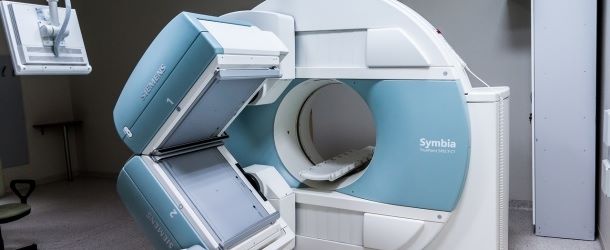Nvision’s on a mission to use quantum to improve MRIs

Quantum sensors have many different potential applications across a variety of industries, but German firm Nvision Imaging Technologies is going about things in a different way by leveraging quantum physics to vastly improve the existing medical sensing technology of magnetic resonance imaging (MRI.)
Sella Brosh, CEO of Germany-based Nvision explained how this works in a rapid-fire presentation at the IQT Fall Conference last week.
There are about 50,000 MRI machines in the world, with about 5,000 new ones being sold each year, according to MagneticResonance.org. MRI machines are used in diagnosing a number of conditions, including many types of cancers, and Brosh said that while they offer great anatomical views, “they don’t give us any metabolic information about the inner workings of tumors. Is it really a tumor or not? Is it an aggressive tumor? Will it respond to treatment? When the tumor is gone, is it really gone, and can we continue to monitor it?”
Brosh explained that MRIs generate anatomical images based on the signal of water in the body, but that they are not sensitive to other molecules in the body, especially metabolites, so they can’t create metabolic images, which can provide more detail about what’s really happening.
Nvision’s answer is not to replace MRIs with something else more powerful and quantum-based, but to use a quantum polarizer to enhance the signal strength of pyruvate, a naturally-occurring metabolite in the body that is a product of the metabolism of glucose. By taking a pyruvate sample from a patient and applying quantum polarizing to enhance its signal by 100,000 times, Brosh said.
“This makes the pyruvate visible to the MRI,” he said. Adding the enhanced pyruvate is injected back into the patient “makes it light up to the MRI,” Brosh said.
The resulting visual is similar in some ways to using a more powerful PET/CT FDG scan, but without the radiation dose, which “is like 300 days in the sun,” according to Brosh.
Two examples of real-world use of Nvision’s quantum polarizer are Sloan Kettering Cancer Center in New York, which is using the process to grade prostate tumors for a scale of aggressiveness, with the goal of making prostate biopsies redundant; and the Cambridge Institute for Cancer Research in the U.K., which is using the technology to predict efficacy of treatments in breast cancer patients.
Brosh wants to broaden the appeal of the technology so that Nvision can start working with a community of developers targeting different pathologies and developing different types of probes and other tools.
All in all, it sounds like a technology and an idea that could make a difference, and the best part is that it’s not on hold waiting for a future when quantum machines are in use daily across the healthcare industry. “The good thing is the hardware is out there,” Brosh said. “We are building on an installed base of 50,000 MRIs.”





















